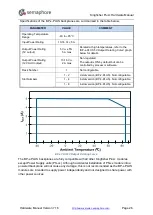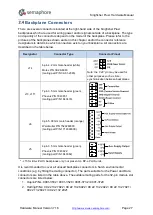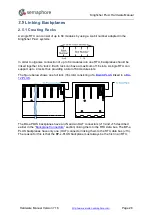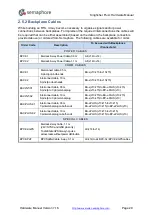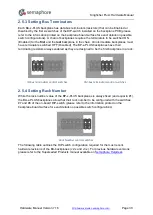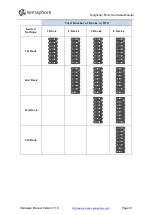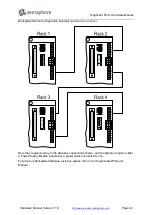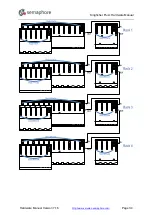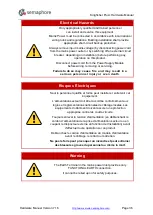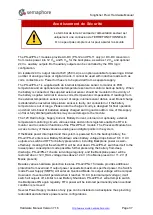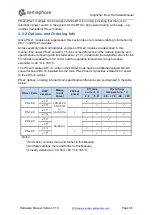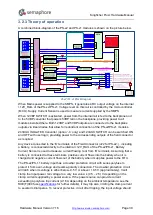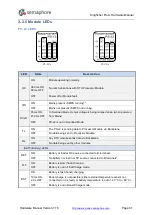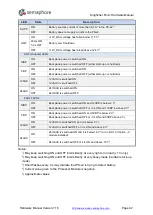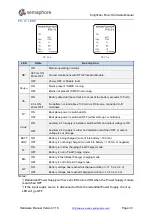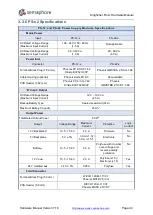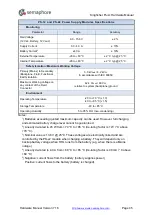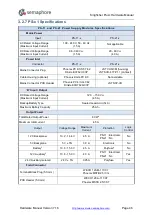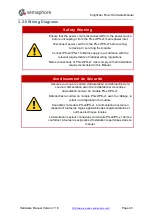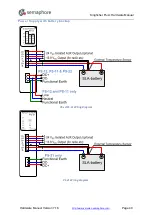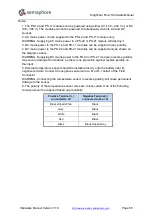
Kingfisher Plus+ Hardware Manual
be removed completely. A 5-10 s pause before re-applying input power may be required to
allow for the polyfuse to cool down if it has tripped.
3.2.4 Battery Charging
PS-x2/PS-x1 power supply modules are designed with provisions for the backup battery
charging and monitoring. They can charge 12 V Sealed Lead Acid (SLA) batteries with the
capacity from 6 Ah to 25 Ah connected to the ‘B+’ and ‘B-’ terminals. SLA batteries of higher
capacity or unsealed (wet) lead-acid batteries can be used if required but the PS-x2/PS-x1
will not be able to fully charge them and to maintain / properly calculate its internal charge
level (required for making correct decisions by charging control algorithms). As a result, their
performance cannot be guaranteed.
When more than 100 mA is drawn out of (or is supplied to) ‘B’ terminals (e.g. when a battery
is connected), the PS-x2/PS-x1 logic assumes that a fully discharged battery has just been
connected and starts its Boost charge. Boost charge is not possible if external temperature
sensor is not connected, or it is faulty, or when battery temperature is below -20 °C or above
+60 °C.
After boost charging the battery for the estimated time (3-10 hours,
BATT DET
and
BATT
BST
LEDs ON, see below for details), the power supply will switch to Float charging (
BATT
DET
and
BATT FLT
LEDs ON).
PS-x2/PS-x1 maintains an estimated charge level of the attached battery and this value is
used for making a decision for switching to the Boost charge when the battery charge level
drops below 40% of its nominal capacity. For this algorithm to work properly, a correct
battery capacity should be provided to the PS-x2/PS-x1 via the Toolbox software
configuration setup. When battery is initially detected, it is assumed to be fully discharged.
Boost charging time mentioned earlier is calculated based on the provided battery capacity
value. Estimated battery charge level is increased by integrating measured charge current
flowing into the battery over the time till it reaches the stated battery capacity. When battery
current becomes negative (for instance, if Mains power is out and the RTU runs from the
battery), this current is integrated over the time and subtracted from the estimated battery
charge level till it reaches zero.
Please note that PS-x2/PS-x1 is not able to distinguish between the real battery connection
and the connection of any other (generic) load or power source to the battery terminals, as it
detects such connections only by measuring the Battery Current. As a result, all battery
status related LEDs may exhibit several various patterns depending on kind of load / source
connected to the ‘B’ terminals.
Hardware Manual Version 7.16
http://www.servelec-semaphore.com/
Page 40

